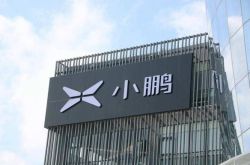From Chip to System: MPS's Ascent Amid Computing, Automotive, and Energy Transformations
![]() 05/15 2025
05/15 2025
![]() 523
523
Produced by Zhineng Zhixin
Amidst rapid technological shifts, Monolithic Power Systems (MPS) is leveraging its relentless R&D investments and pioneering system integration capabilities.
MPS has achieved significant strides in pivotal areas such as data centers, automotive electronics, humanoid robots, audio technology, and battery management, transcending the confines of traditional power management. Through comprehensive innovations in packaging, architecture, and algorithms, it is fostering the implementation and commercialization of a new generation of power electronics technology.
Driven by the computing era's large models, software-defined vehicles, electrification trends, and the green energy transition, MPS is forging a new technological stronghold with its differentiated offerings, swiftly expanding its global market presence.
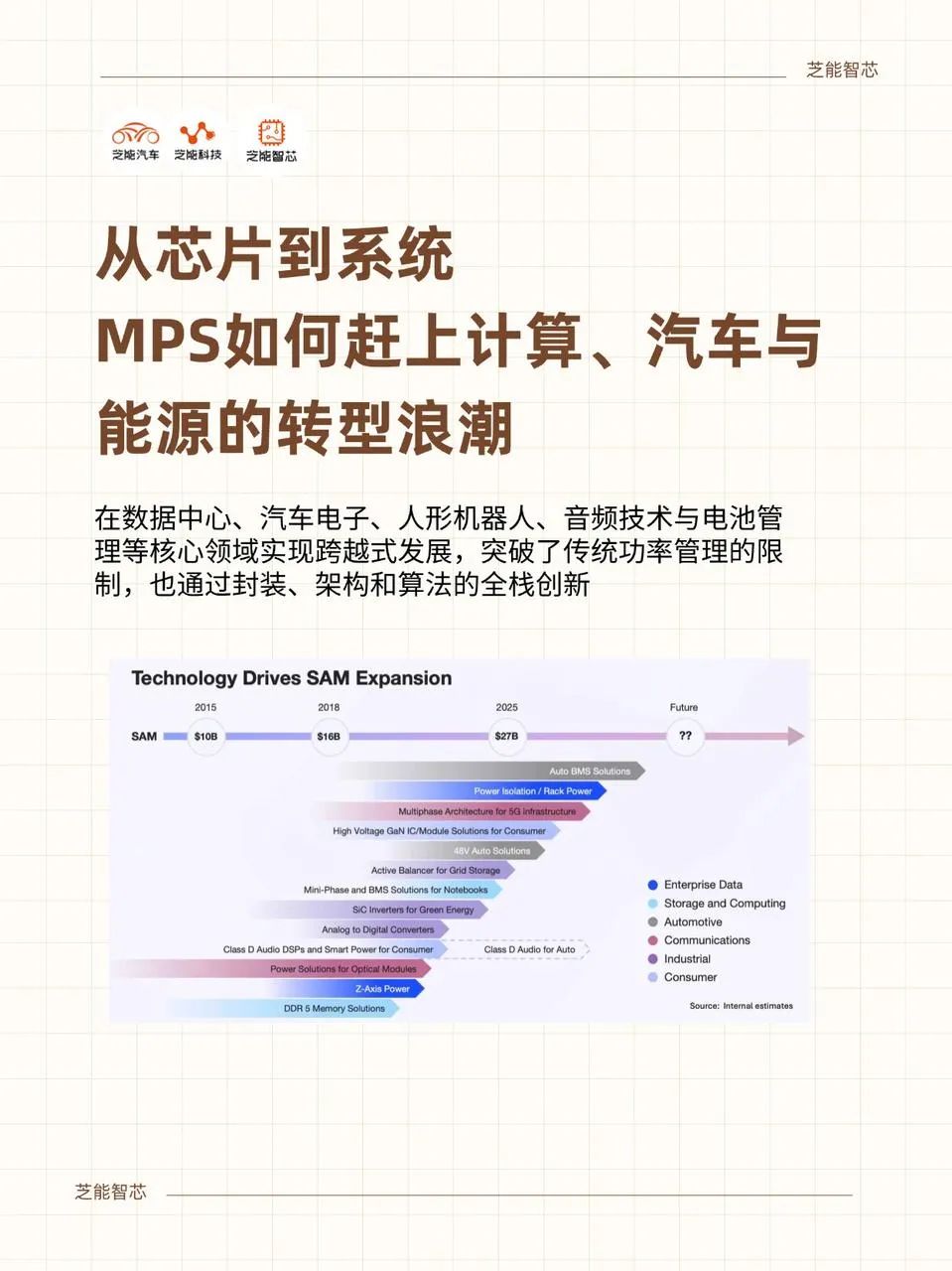
Note: We are genuinely intrigued by MPS's exemplary positioning within the realm of traditional non-computing chip companies.
Part 1
Computing Power and Mobility:
Strengthening Technological Foundations and Scaling Operations
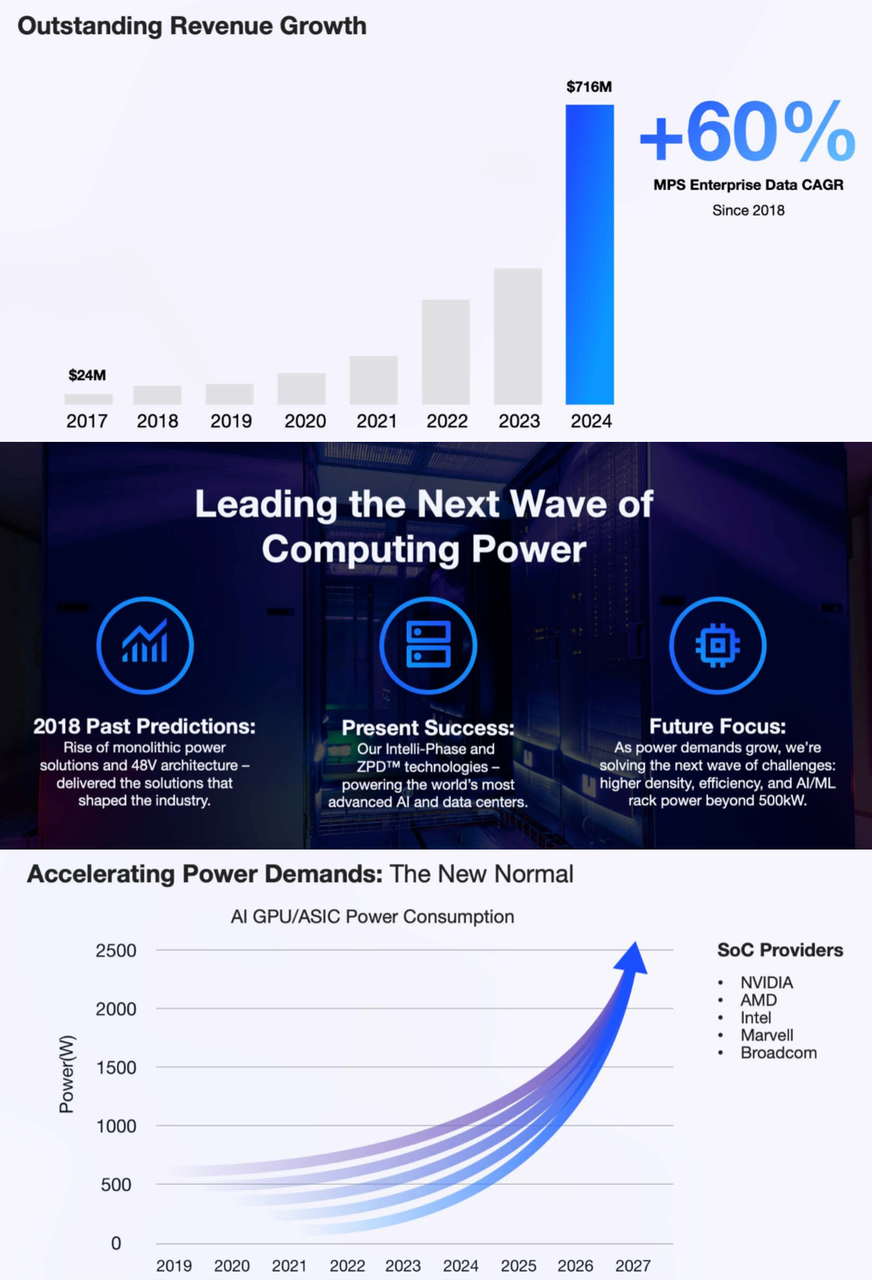
The evolution of computing power infrastructure is reshaping the entire data center architecture at an unprecedented pace. Amidst the load fluctuations sparked by artificial intelligence and machine learning, the power system has emerged as a new critical pathway. MPS is continuously innovating in this domain, with its single-chip power solutions surpassing the physical constraints of traditional size and frequency, earning market recognition through modular, high-density, and highly integrated approaches.
The advancements in Intelli-Phase and ZPD technologies have accelerated the evolution of core power packaging. The second-generation Intelli-Module platform enhances power density to 3A/mm, significantly reducing package area, and has become the default choice for numerous AI training servers and high-performance computing platforms.
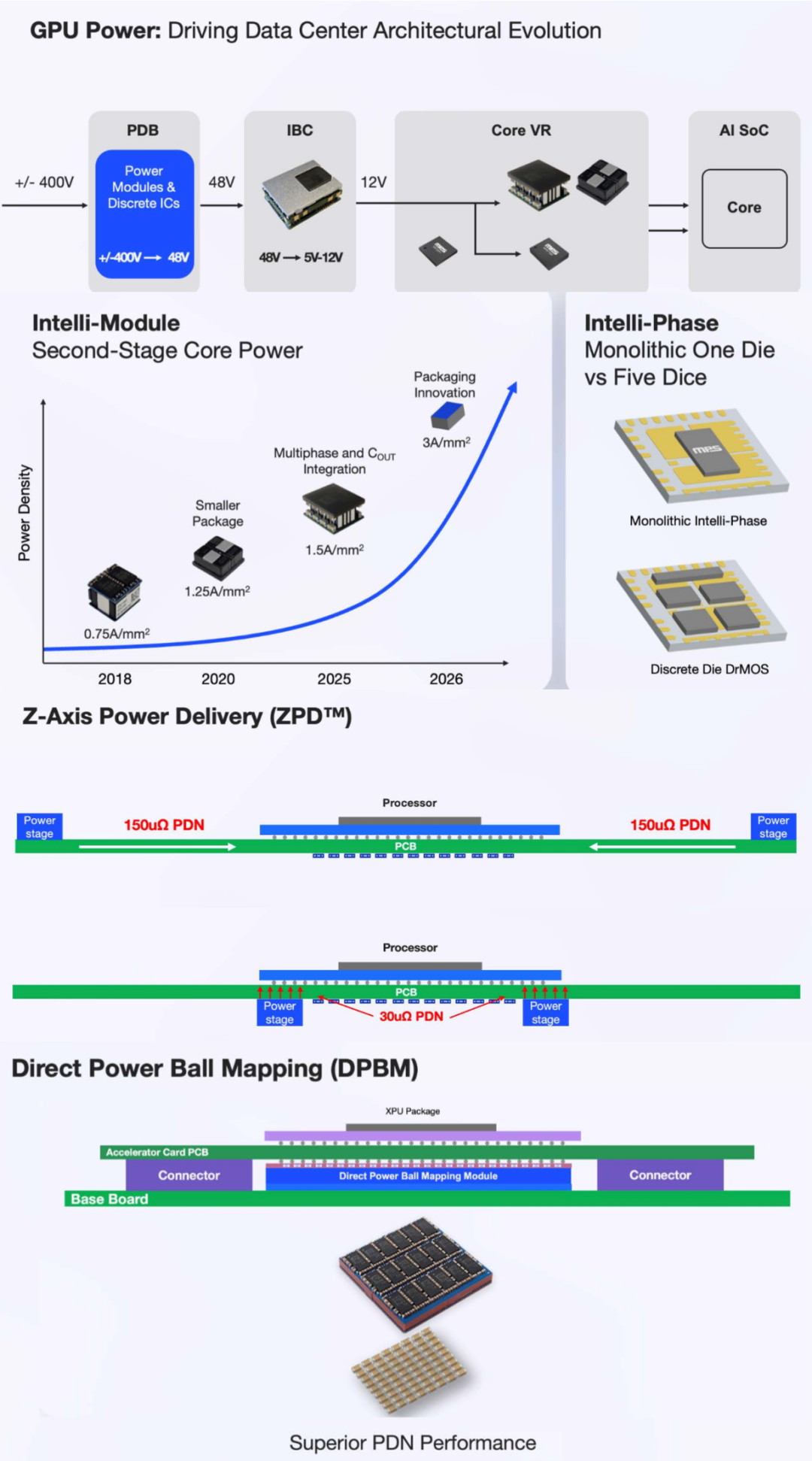
Concurrently, the escalating power consumption of GPU and ASIC computing chips poses challenges to data center power architecture in terms of layered voltage conversion and heat dissipation.
MPS's proposed 48V power solution is not merely an extension of voltage conversion paths but a system-level redesign. Its architecture spans the entire conversion chain from +/-400V to 5V-12V, striking a balance between module upgrades, scalability, and overall efficiency. It has been adopted by leading data center operators to support anticipated future deployments of AI racks exceeding 600kW.
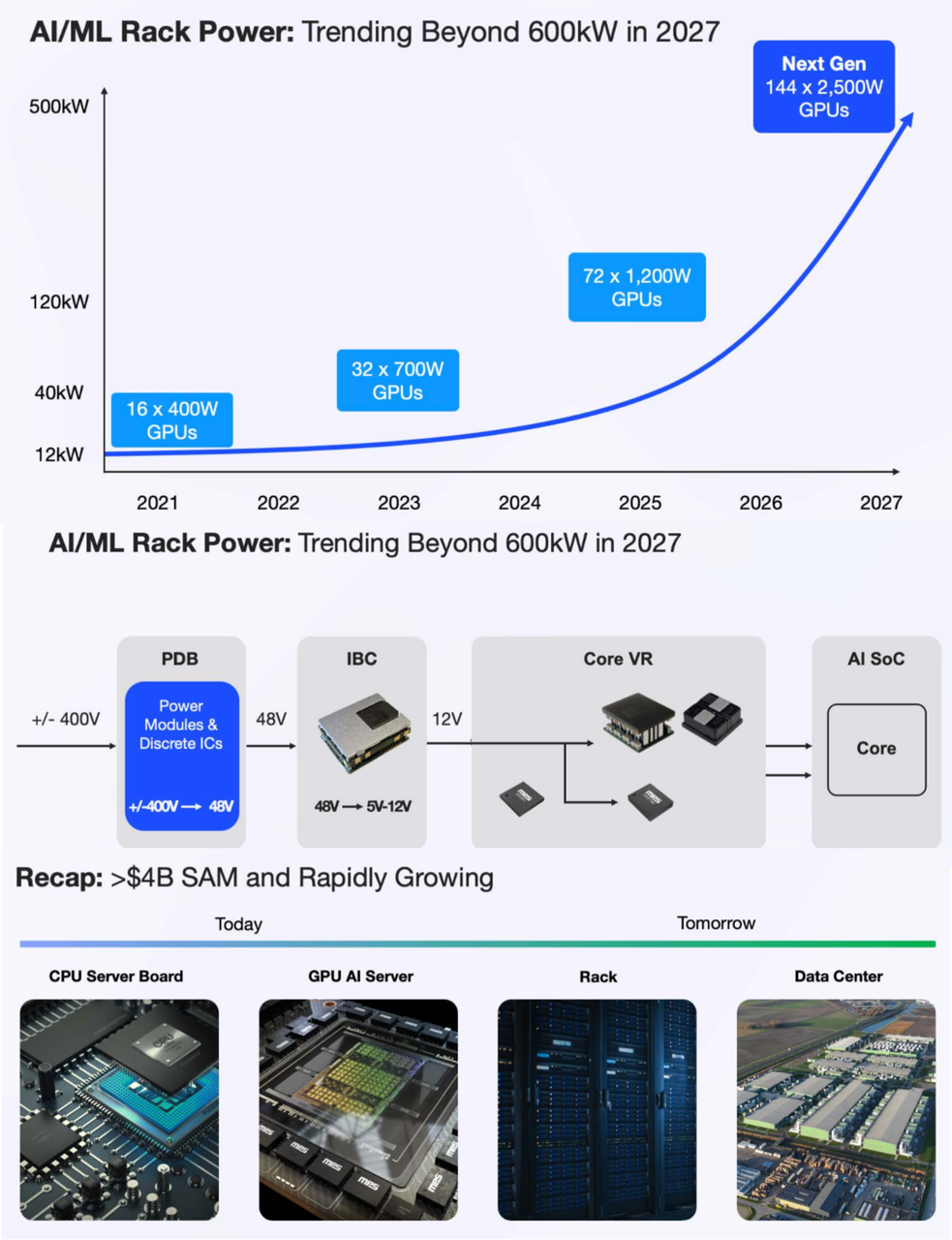
Beyond the realm of computing power, the mobility system is undergoing a restructuring phase marked by parallel developments in software-defined vehicles and electrification. MPS continues to broaden its application scope and deepen its technical expertise in this field.
The automotive business has witnessed a seven-fold revenue increase from 2013 to 2024, with a compound annual growth rate of 44%. Underpinning this growth trajectory is the technological trust chain forged between traditional Tier 1 players and new electric platform ecosystems.

In ADAS scenarios, MPS's radar chip solutions offer lower false alarm rates and quicker response times through area compression and operational speed optimization. In digital cockpits, MPS reduces the motherboard area by 70% and component count by nearly half with a highly integrated architecture, showcasing systematic advantages in power efficiency and thermal management.
These system-level optimizations are not isolated technological enhancements but proactive responses to the growing complexity in vehicle architecture.
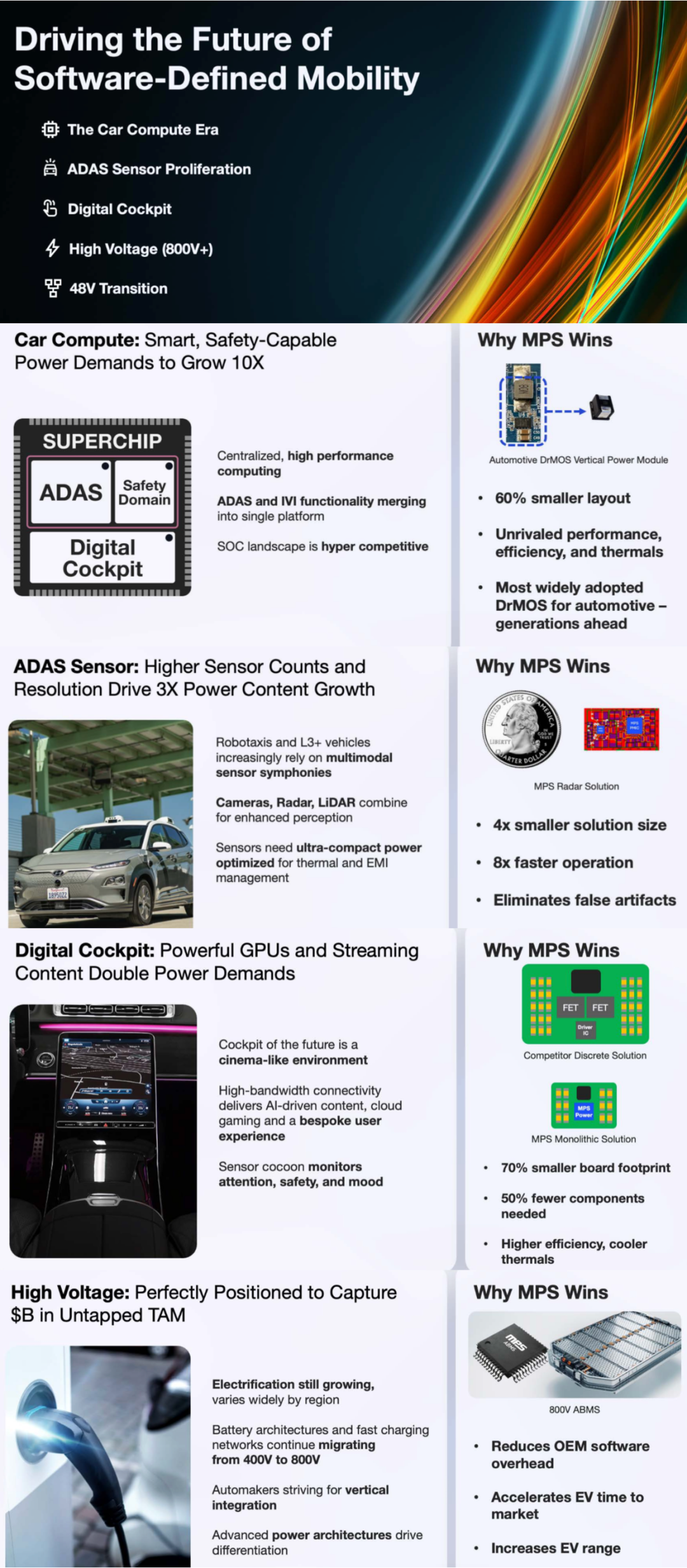
Amidst the rise of 800V high-voltage platforms, MPS's ABMS architecture aims to expedite time-to-market, extend range, and alleviate the embedded software burden. For the 48V mild-hybrid transition phase, its MPSafe regional power module exhibits robust scalability and integration efficiency, catering to the platform needs of diverse manufacturers.
The transition from power granularity design to regional architecture collaboration has emerged as a pivotal strategy for MPS to establish technological barriers in the electrification era.
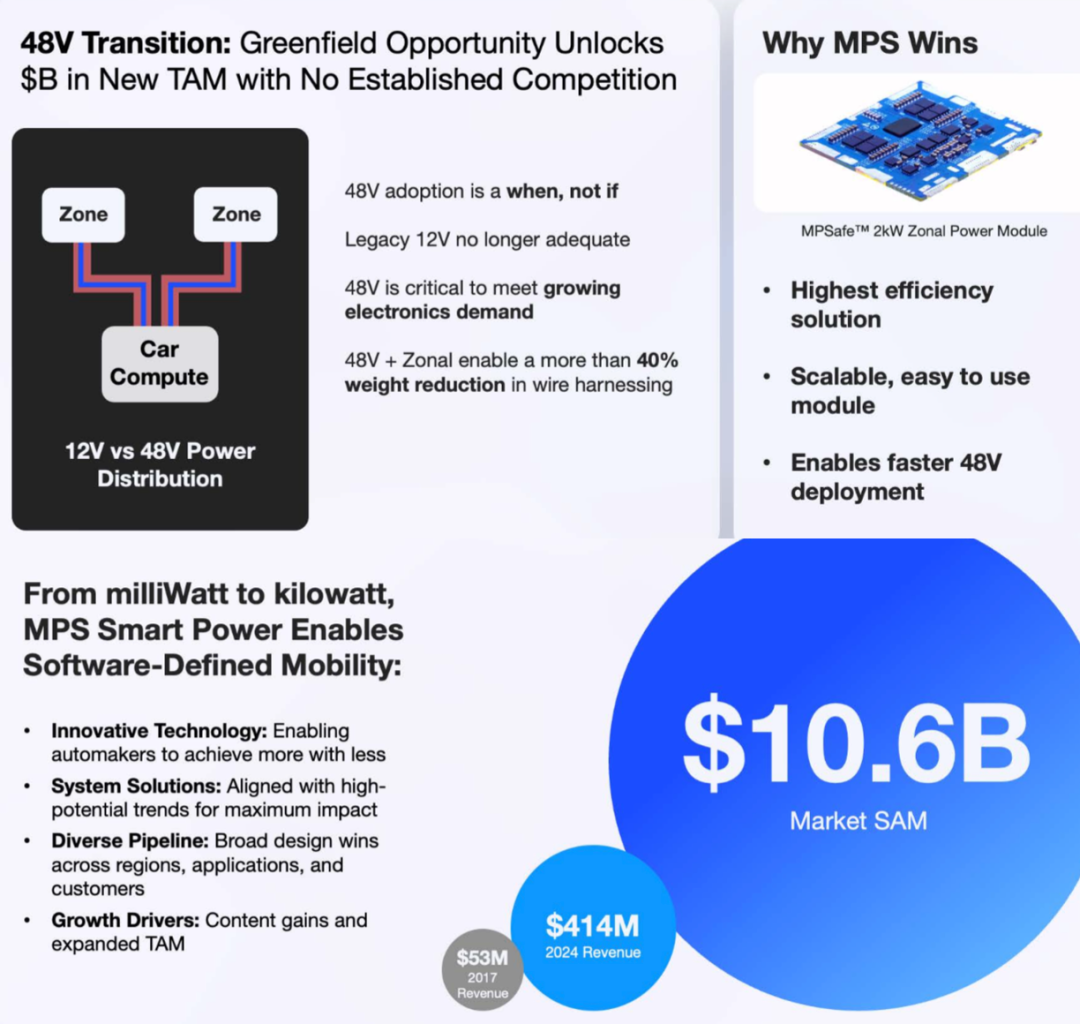
Part 2
Robots, Audio, and Energy:
The Next Frontier, Breaking Boundaries
Entering 2024, MPS's focus on humanoid robots, immersive audio systems, and green energy transitions is unlocking new growth potentials. The versatility and customization capabilities of its technology base render these ventures not mere isolated experiments but key branches contributing to long-term growth trajectories.
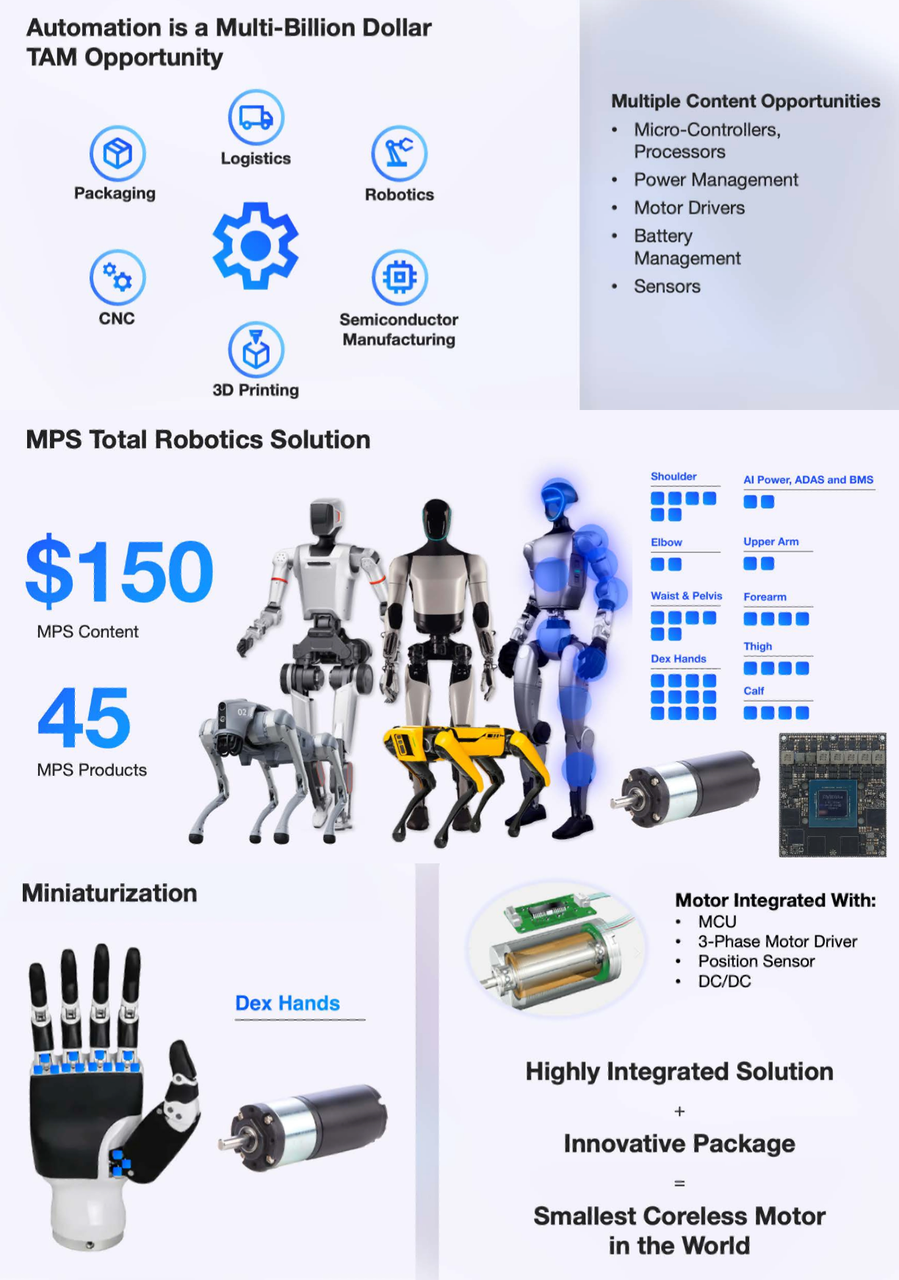
In the realm of humanoid robots, MPS introduces integrated solutions encompassing a comprehensive chain of control, power supply, drive, and perception. In intricate joint control scenarios, motors, three-phase drivers, DC-DC power supplies, and position sensors are integrated into a single package, enabling higher precision and space-efficient motion control.
This integration technology has been rigorously validated in high-end humanoid hand modules, supporting the intricate path of robots transitioning from industrial to service and consumer environments.
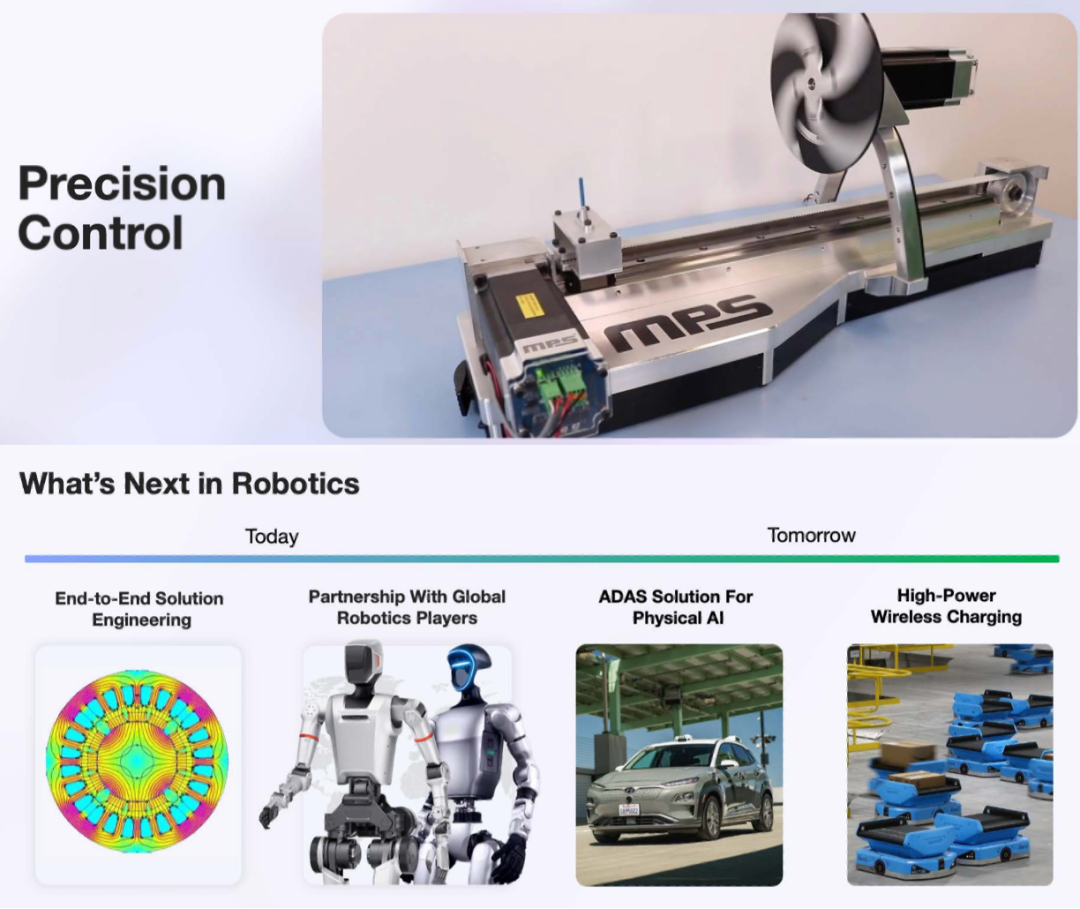
Audio technology innovation is showcased through the QXIGN platform, which slashes power consumption by nearly 90% compared to traditional audio amplification technology. It integrates high-fidelity output and intelligent noise reduction capabilities without relying on additional algorithms or external controllers.
This facilitates rapid replication in automotive, home theater, and large venue systems. Its internal driving force stems not only from technological breakthroughs but also from evolving user experience demands on electro-acoustic systems.
Battery Management Systems (BMS) in green energy scenarios are the lifeblood of electric vehicles and energy storage systems.
MPS consistently invests in core competencies such as active balancing, state-of-charge accuracy, safety certification, and system integration. Since launching its first-generation product in 2021, MPS has evolved from a provider of foundational monitoring modules to a full-system turnkey solution provider, further venturing into the electric two-wheeler and portable device markets in 2024.
On the energy storage front, its products have been deployed in multiple commercial applications, offering higher voltage support, reduced chip counts, and cost-effective BOM designs, effectively benchmarking against industry leaders.
The future notebook market has become a new focal point for MPS. Its new single-chip battery charger boasts a 50% size reduction compared to its predecessor and doubles charging speed, aiming to set the benchmark for the next generation of high-density mobile device power solutions.
Note: We will delve into the last two points in subsequent discussions.
Summary
Beyond Integration:
Systematic Thinking Redefines Growth Dynamics
MPS's technology matrix is not a mere "diversification" extension but a cross-scenario capability migration anchored in the power system's core. From high-power computing, electric mobility, to humanoid robots and green energy, its business evolution consistently revolves around the three pillars of "system integration," "power optimization," and "scenario adaptation.
Future competition will center not on individual chip performance but on finding the optimal balance between computing power, energy efficiency, and integration. This capability will determine who secures first-mover advantage in technological node shifts and lays the groundwork for standards in emerging markets.
For MPS, the path is clear: from packaging innovation to system design, from AI centers to humanoid edges, its growth strategy is progressively advancing towards higher-dimensional "platform-based innovation".




